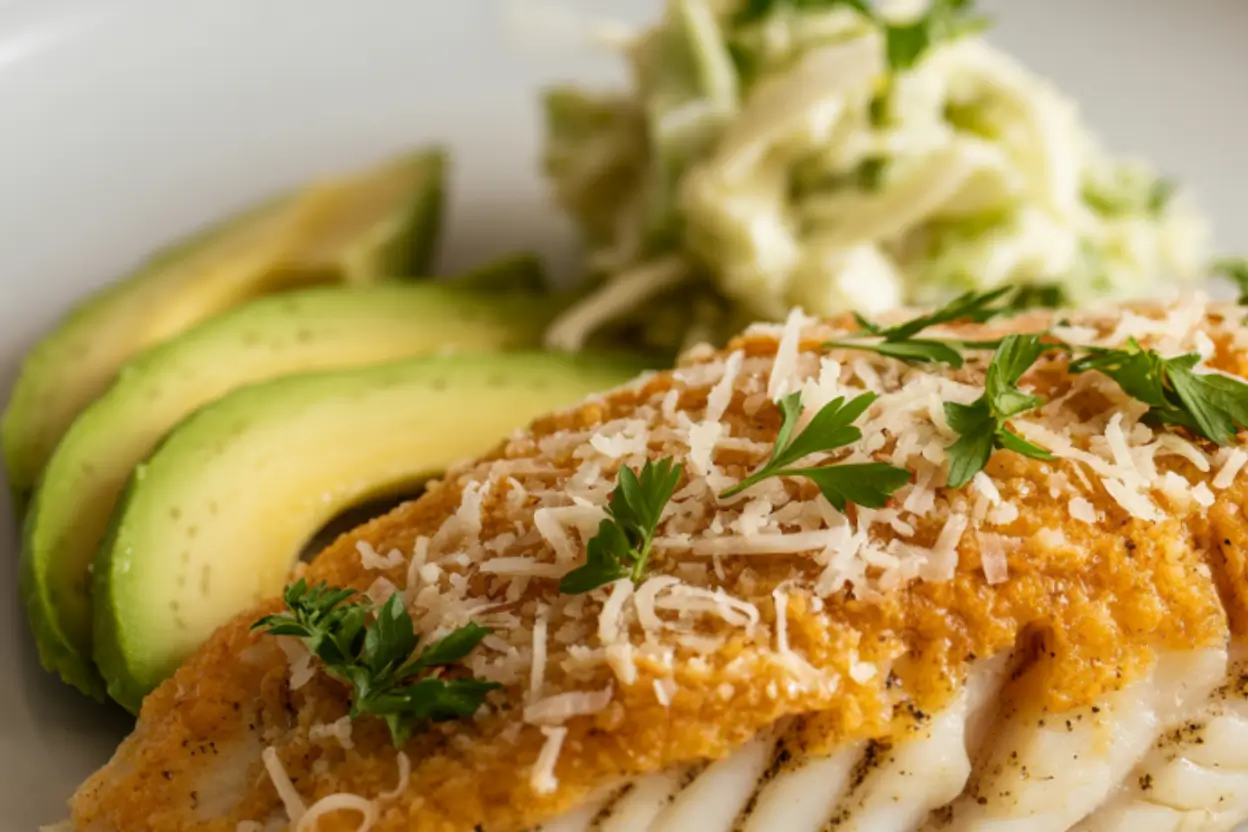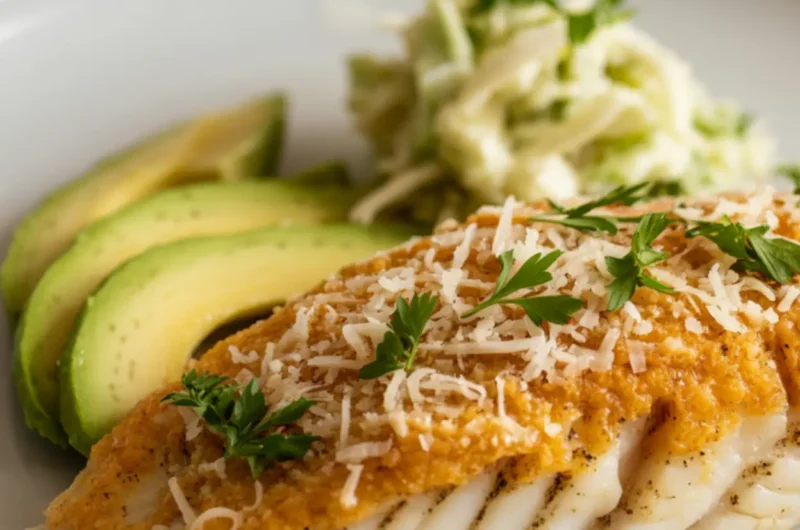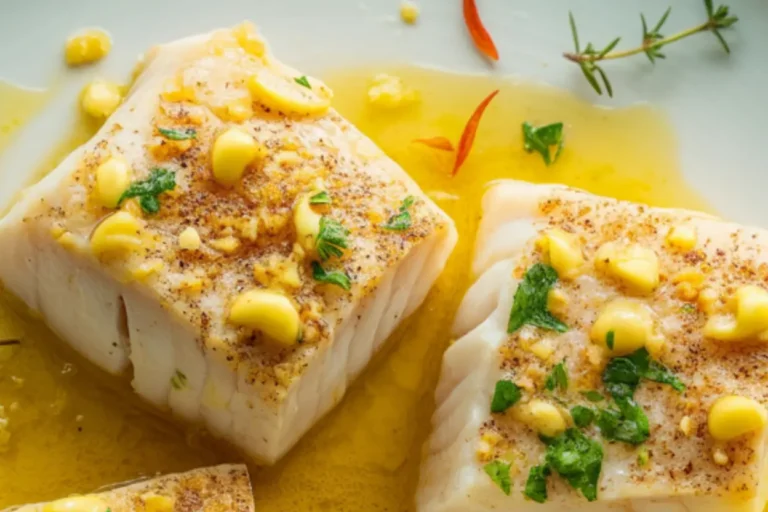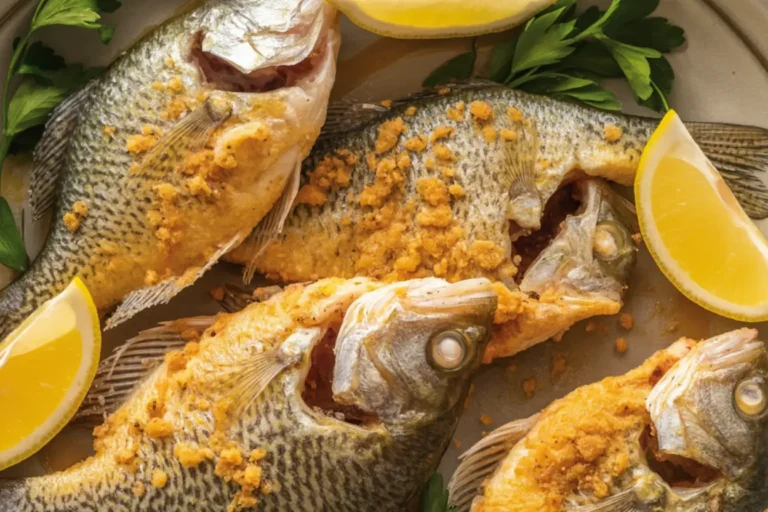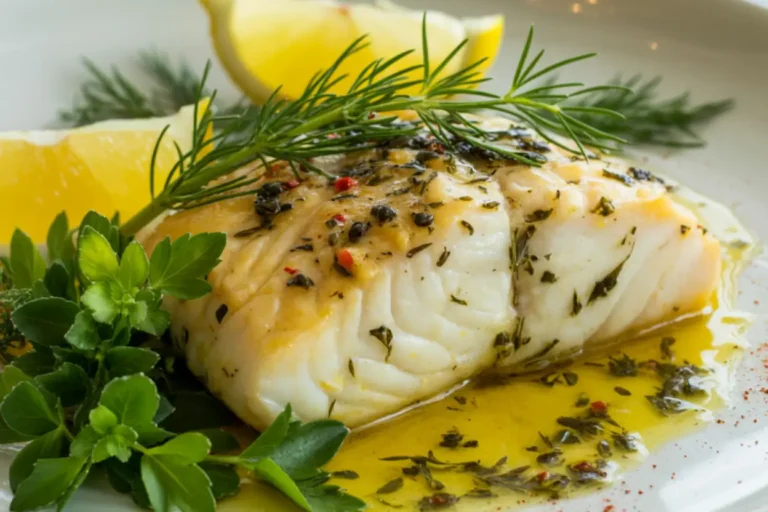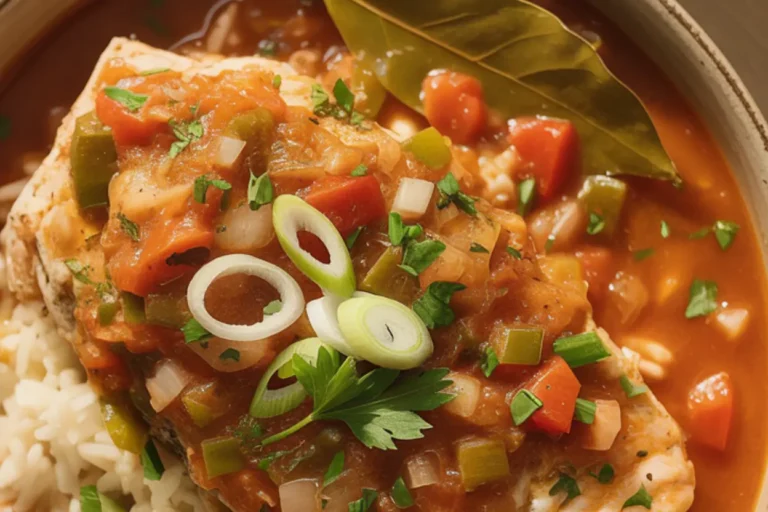Parmesan Crusted Tilapia: How to Get That Golden Crust Right
Table of Contents
There’s something undeniably satisfying about breaking through a perfectly golden, crispy Parmesan crust to reveal tender, flaky fish underneath. After years of perfecting this recipe, I’ve found that Parmesan crusted tilapia strikes that ideal balance between impressive presentation and weeknight-friendly preparation. It’s the kind of dish that makes you look like a culinary wizard while requiring surprisingly little effort.
Thank you for reading this post, don't forget to subscribe!What makes this recipe truly special is how the nutty, salty Parmesan cheese forms an irresistible golden crust that protects the delicate fish from overcooking while adding incredible flavor. The mild nature of tilapia makes it the perfect canvas for the bold Parmesan coating, creating a dish that appeals to even reluctant seafood eaters. Whether you’re looking to add more fish to your family’s diet or simply want a quick yet elegant dinner option, this Parmesan crusted tilapia delivers restaurant-worthy results in your home kitchen – and I’m going to show you exactly how to get that golden crust just right, every single time.
How to Make Parmesan Crusted Tilapia
Quick Overview
This Parmesan crusted tilapia transforms simple fish fillets into a restaurant-worthy entrée with a golden, crispy exterior and perfectly tender, flaky interior. What makes this dish special is the contrast between the boldly seasoned, cheese-laden crust and the mild, delicate fish. The Parmesan cheese doesn’t just add flavor—it creates that sought-after textural magic as it browns in the pan, forming a nutty, crisp coating that seals in moisture and complements the fish beautifully.
One of the greatest appeals of this recipe is its impressive efficiency—from start to finish, you’re looking at just about 20 minutes total preparation and cooking time. The preparation is straightforward, requiring basic ingredients you likely already have in your pantry, and the cooking technique is simple enough for beginners while yielding professional results. The versatility of this dish makes it perfect for both quick weeknight dinners and more elegant entertaining, as it plates beautifully and pairs well with countless side dishes. For a dish that delivers such impressive results, the time investment is remarkably minimal, making this Parmesan crusted tilapia a true culinary win.
The Ingredients I Use to Bring My Parmesan Crusted Tilapia to Life
For the Parmesan crust:
- ¾ cup freshly grated Parmesan cheese (not the pre-grated kind in a shaker)
- 2 tablespoons all-purpose flour
- 1 teaspoon garlic powder
- 1 teaspoon Italian seasoning
- ½ teaspoon paprika (sweet or smoked)
- ¼ teaspoon onion powder
- ¼ teaspoon freshly ground black pepper
- Pinch of cayenne pepper (optional, for heat)
For the fish:
- 4 tilapia fillets (about 6 ounces each), patted dry
- ½ teaspoon kosher salt
- 2 tablespoons Dijon mustard
- 1 tablespoon mayonnaise
- 1 teaspoon lemon zest
- 1 tablespoon fresh lemon juice
For cooking:
- 2 tablespoons olive oil
- 1 tablespoon unsalted butter
For garnish:
- 2 tablespoons fresh parsley, chopped
- Lemon wedges for serving
Step-by-Step Instructions
Step 1: Prepare the Parmesan Coating
- In a shallow dish or pie plate, combine the freshly grated Parmesan cheese, all-purpose flour, garlic powder, Italian seasoning, paprika, onion powder, black pepper, and cayenne pepper (if using).
- Use a fork to mix these ingredients thoroughly, ensuring the spices are evenly distributed throughout the cheese mixture. The flour helps the coating adhere to the fish and aids in browning, while the spices add depth of flavor to complement the Parmesan.
- Set this mixture aside while you prepare the fish. Having it ready in a shallow dish will make the coating process much easier.
Step 2: Prepare the Fish and Binding Mixture
- Place the tilapia fillets on a paper towel and pat them very dry on both sides. This crucial step removes excess moisture that would prevent proper browning and could make your crust soggy. Season both sides lightly with kosher salt.
- In a small bowl, whisk together the Dijon mustard, mayonnaise, lemon zest, and lemon juice until smooth and well combined. This mixture serves as both a flavor enhancer and the “glue” that will help the Parmesan coating adhere to the fish.
- Using a spoon or pastry brush, spread this mixture evenly on both sides of each tilapia fillet, making sure to cover the entire surface. The layer should be thin but complete – too thick and it could make the crust slide off during cooking.
Step 3: Coat the Fish with the Parmesan Mixture
- One at a time, place each mustard-coated tilapia fillet into the Parmesan mixture. Press gently to adhere the coating to one side, then carefully flip and coat the other side. The coating should form an even layer on both sides.
- For a thicker crust, you can press additional Parmesan mixture onto any spots that seem thinly coated, but be careful not to make it too thick, as it may not cook evenly.
- Once coated, transfer the fillets to a clean plate or cutting board. Let them rest for 2-3 minutes, which helps the coating set and adhere better before cooking.
Step 4: Cook the Parmesan Crusted Tilapia
- Warm a large non-stick skillet or a well-seasoned cast iron pan over medium heat. Pour in the olive oil and let it heat until it shimmers, being careful not to let it smoke.
- Add the butter to the hot oil and swirl the pan gently as it melts. The combination of oil and butter allows higher-heat cooking while providing the rich flavor of butter. The butter should foam slightly but not brown.
- Carefully place the coated tilapia fillets in the pan, leaving space between them to ensure even cooking (work in batches if necessary). If your fillets have a thicker end and a thinner end, position the thicker end toward the outside of the pan where it’s typically hotter.
- Cook the fillets without moving them for 3-4 minutes, until the bottom crust has turned a deep golden brown. Resist the urge to check or move them too early, as this can cause the crust to stick to the pan and pull away from the fish.
- Using a thin, wide spatula, preferably a fish spatula if available, gently flip each fillet and cook for another 2–3 minutes on the other side. Continue cooking until the crust is golden and crisp, and the fish flakes easily with a fork. The internal temperature should reach 145°F (63°C) at the thickest point.
- If cooking in batches, transfer the cooked fillets to a warm oven (200°F/95°C) to keep them warm while you cook the remaining fish.
Step 5: Finish and Serve
- Transfer the Parmesan crusted tilapia fillets to serving plates, taking care not to break the beautiful crust you’ve created.
- Sprinkle each fillet with freshly chopped parsley for a pop of color and fresh flavor.
- Serve immediately with lemon wedges on the side for squeezing over the top just before eating, which brightens the flavors and cuts through the richness of the cheese.
- For an extra touch, you can drizzle a small amount of good-quality olive oil around the plate for both presentation and flavor enhancement.
What to Serve Parmesan Crusted Tilapia With
This versatile dish pairs beautifully with numerous sides. Here are some excellent complementary options:
Vegetable sides:
- Roasted asparagus with lemon and garlic
- Sautéed spinach with pine nuts
- Broccolini with chili flakes and lemon zest
- Green beans almondine
- Oven-roasted Brussels sprouts with balsamic glaze
- Simple garden salad with light vinaigrette
Starchy accompaniments:
- Lemon herb risotto
- Garlic mashed potatoes
- Orzo pasta tossed with butter and herbs
- Crusty artisan bread for sopping up any pan juices
- Angel hair pasta with olive oil and fresh herbs
- Wild rice pilaf with mushrooms
Sauce options for drizzling (optional):
- Lemon butter sauce
- Light tomato and caper sauce
- Fresh herb oil
- Roasted red pepper coulis
- Simple white wine sauce
Light wines that pair well:
- Pinot Grigio
- Sauvignon Blanc
- Unoaked or lightly oaked Chardonnay
- Dry Vermentino
- Albariño
Complete the meal with:
- A light citrus sorbet or lemon tart for dessert
- Fresh berries with a touch of whipped cream
- Limoncello served ice-cold as a digestif
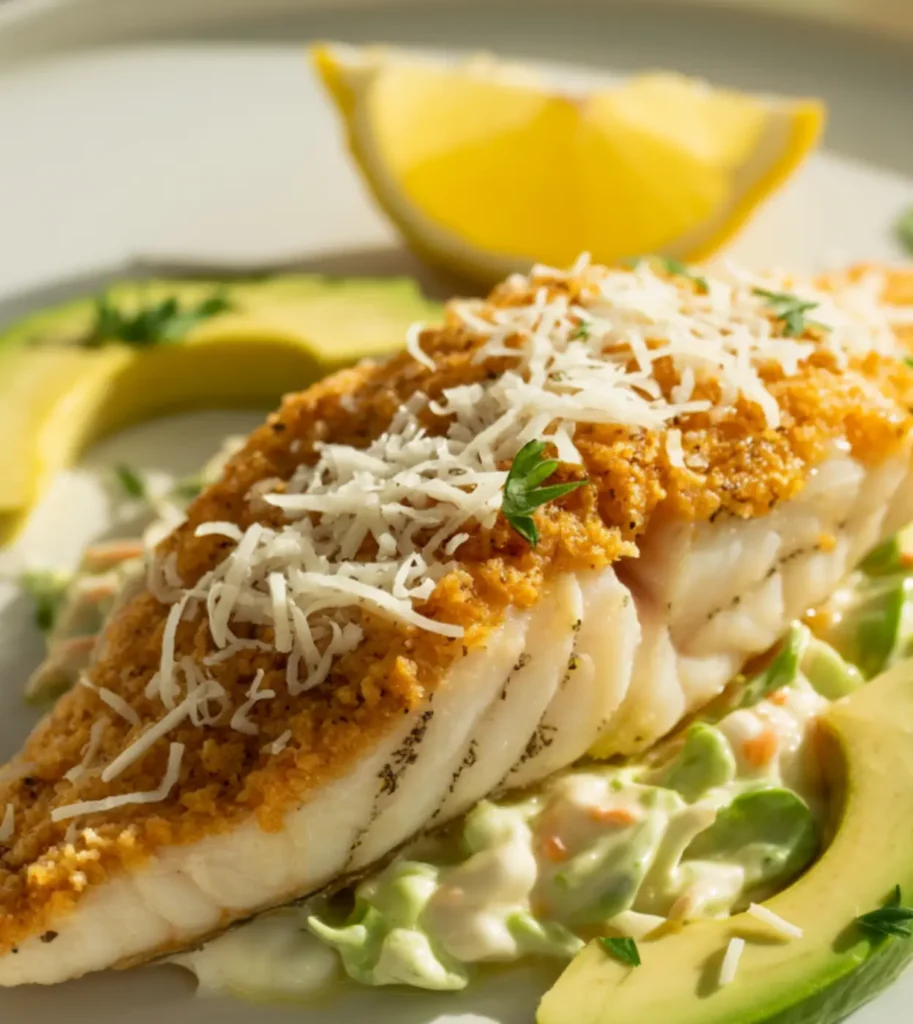
Top Tips for Perfecting Parmesan Crusted Tilapia
- Choose the right Parmesan: The key to an exceptional Parmesan crust is using freshly grated Parmesan cheese rather than pre-grated varieties. Pre-grated cheese often contains anti-caking agents that can prevent proper melting and browning. For the best flavor and texture, opt for authentic Parmigiano-Reggiano and grate it yourself just before using. The fresh cheese not only tastes better but also creates that perfect golden crust that’s crispy on the outside while remaining slightly chewy where it meets the fish.
- Master moisture management: Excess moisture is the enemy of a crispy crust. Pat the tilapia fillets thoroughly dry with paper towels before applying any coatings. If your fillets are frozen, thaw them completely in the refrigerator and then pat dry again. For extra insurance against sogginess, you can place the dried fillets on a wire rack in the refrigerator for 15 minutes to further air-dry the surface. This step makes a remarkable difference in achieving that restaurant-quality golden crust.
- Pan temperature matters: Starting with a properly preheated pan is crucial for developing a beautiful crust without overcooking the delicate fish. The pan should be hot enough that a drop of water sizzles on contact, but not so hot that the butter immediately browns or burns. If your crust is burning before the fish is cooked through, your heat is too high; if the crust isn’t developing good color, your heat is too low. Medium heat typically works best, but adjust based on your specific stovetop.
- The right tools make a difference: A good non-stick pan or well-seasoned cast iron skillet is ideal for this recipe. If using stainless steel, be sure to let the crust fully develop before attempting to flip the fish, as it will release naturally from the pan when the crust is properly formed. Additionally, invest in a thin, wide fish spatula – its flexible edge slides easily under the fish without breaking the crust.
- Thickness consistency: If your tilapia fillets vary in thickness, take steps to make them more uniform. For fillets with a very thick end and a thin end, you can make a few shallow cuts in the thickest part to help it cook evenly. Alternatively, fold the thinnest section under itself to create a more uniform thickness throughout. Even cooking ensures both perfect doneness and crust development.
- Substitution options:
- No tilapia? This technique works wonderfully with other mild white fish like flounder, sole, cod, or haddock. Adjust cooking time based on thickness.
- Dairy-free version: Replace the Parmesan with nutritional yeast mixed with ground almonds, and use olive oil instead of butter.
- Gluten-free adaptation: Substitute the all-purpose flour with rice flour or a gluten-free flour blend.
- No Dijon? Use whole grain mustard or even honey mustard in a pinch (reduce any added sweetener if using the latter).
- Troubleshooting common issues:
- Crust falling off: This usually happens when the binding layer is too thick or the fish is too wet. Ensure a thin, even layer of the mustard mixture and very dry fish.
- Uneven browning: Your pan likely has hot spots. Rotate the pan on the burner halfway through cooking each side.
- Fish sticking to pan: The pan wasn’t hot enough when you added the fish, or you tried to flip too soon. Let the crust fully develop before attempting to turn it.
Storing and Reheating Tips
While Parmesan crusted tilapia is at its absolute best when freshly made, here’s how to handle leftovers properly:
Short-term storage:
- Allow any leftover fish to cool completely before refrigerating
- Store in an airtight container, placing paper towels below and above the fillets to absorb moisture
- Keep refrigerated for up to 2 days (fish is highly perishable)
- Note that the crust will soften during storage – this is unavoidable but can be partially remedied when reheating
Freezing (less ideal but possible):
- For best results, freeze before cooking: Prepare the fish through the coating step, then freeze on a parchment-lined tray until solid
- Once frozen, wrap individual fillets in plastic wrap, then foil, and store in a freezer bag
- If freezing cooked leftovers, accept that the texture will change significantly
- Use frozen uncooked fillets within 1 month and cooked fillets within 2 weeks
- Thaw frozen uncooked fillets overnight in the refrigerator before cooking
Reheating methods:
For the best crust revival:
- Oven method: Preheat oven to 275°F (135°C). Place fillets on a wire rack over a baking sheet and heat for 10-15 minutes until warmed through. Finish under the broiler for 1-2 minutes to re-crisp the crust.
Alternative methods:
- Toaster oven: Use the same method as a conventional oven, but watch carefully as the smaller space can heat more quickly
- Air fryer: 3-4 minutes at 350°F (175°C) works wonderfully to restore crispness
- Avoid microwaving if possible, as it will make the crust soggy and can make the fish rubbery
Creative uses for leftovers:
- Flake leftover fish and mix with a bit of additional mayo and herbs to make a delicious fish salad
- Break the fillets into pieces to make gourmet fish tacos topped with slaw and avocado.
- Add to pasta with olive oil, cherry tomatoes, and fresh basil for a Mediterranean-inspired dish
Quality check before consuming:
- If leftover fish has a strong, unpleasant odor or slimy texture, discard it immediately
- Fish should maintain its color – discard if it has darkened significantly or developed an off color
Perfecting Parmesan crusted tilapia is one of those culinary skills that delivers maximum impact with minimal effort. The contrast between the golden, crispy exterior and the tender, flaky fish creates a dining experience that feels indulgent yet comes together quickly enough for everyday meals. What makes this dish truly special is how it transforms simple, affordable ingredients into something that looks and tastes like it came from a fine dining restaurant.
While the recipe itself is straightforward, understanding the nuances – from properly drying the fish to achieving the ideal pan temperature – makes all the difference between a good result and a truly exceptional one. By following these detailed steps and tips, you’ll consistently achieve that perfect golden crust that’s the hallmark of this dish.
Whether you’re trying to incorporate more seafood into your diet, looking for quick yet impressive dinner options, or simply wanting to expand your cooking repertoire, this Parmesan crusted tilapia recipe deserves a place in your regular rotation. It proves that seafood doesn’t have to be intimidating or time-consuming to be absolutely delicious, and the techniques you’ll master here can be applied to countless other dishes as well.
click here to follow me on pinterest
Parmesan Crusted Tilapia: How to Get That Golden Crust Right
Cuisine: AmericanDifficulty: Easy4
servings15
minutes10
minutes350-400
kcalThis Parmesan Crusted Tilapia is a quick and flavorful dish featuring tender tilapia fillets coated in a savory blend of freshly grated Parmesan cheese, herbs, and spices. Pan-seared to a golden, crispy finish, it’s elevated with a zesty Dijon and lemon spread, making it perfect for a weeknight dinner or a light, upscale meal.
Ingredients
¾ cup freshly grated Parmesan cheese (not the pre-grated kind in a shaker)
2 tablespoons all-purpose flour
1 teaspoon garlic powder
1 teaspoon Italian seasoning
½ teaspoon paprika (sweet or smoked)
¼ teaspoon onion powder
¼ teaspoon freshly ground black pepper
Pinch of cayenne pepper (optional, for heat)
4 tilapia fillets (about 6 ounces each), patted dry
½ teaspoon kosher salt
2 tablespoons Dijon mustard
1 tablespoon mayonnaise
1 teaspoon lemon zest
1 tablespoon fresh lemon juice
2 tablespoons olive oil
1 tablespoon unsalted butter
2 tablespoons fresh parsley, chopped
Lemon wedges for serving
Instructions
- Make the Parmesan Coating
In a shallow dish, mix together Parmesan cheese, flour, garlic powder, Italian seasoning, paprika, onion powder, black pepper, and cayenne (if using). Set aside—this will be your crust mixture. - Prepare the Tilapia and Mustard Coating
Pat tilapia fillets dry and lightly season with salt. In a bowl, whisk Dijon mustard, mayonnaise, lemon zest, and lemon juice. Brush this mixture evenly over both sides of each fillet—it helps the crust stick and adds flavor. - Coat the Fish
Press each fillet into the Parmesan mixture, coating both sides evenly. Let the coated fillets rest for 2–3 minutes to help the crust set before cooking. - Pan-Fry the Tilapia
Heat olive oil in a non-stick or cast-iron skillet over medium heat. Add butter and let it melt. Place the fillets in the pan and cook undisturbed for 3–4 minutes until golden. Flip gently and cook another 2–3 minutes until crispy and the fish flakes easily (internal temp should be 145°F/63°C). - Garnish and Serve
Transfer fillets to plates, garnish with chopped parsley, and serve with lemon wedges. Optional: drizzle a bit of good olive oil around the plate for a refined touch.
Notes
- Using freshly grated Parmesan—not the pre-grated shaker kind—makes a noticeable difference in flavor and texture. The Dijon mustard and lemon zest add brightness and depth, balancing the richness of the crust. Serve this dish with a fresh slaw, avocado slices, or a light salad for a complete meal that feels both healthy and indulgent.

